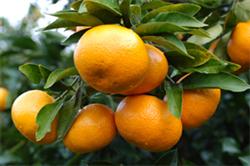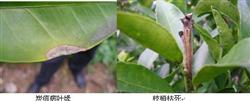Control of citrus fruit fly in May

Citrus fruit fly is commonly known as citrus maggot, and the killed fruit is called maggot fruit. Before 2009, it was a national plant quarantine pest, harming four types of citrus: pomelo, lime, navel orange and broad-skinned citrus, among which limes and sweet oranges suffered the most. Its larvae feed on the petal in the fruit, making the fruit yellow before ripening, reddish in yellow, and seriously rotten. The citrus fruit drop rate is about 10% in general years and more than 60% in serious years, which is a serious threat to the development of citrus industry in our county. In view of this, the following control suggestions are put forward: the first and middle of May is the peak period of adult Eclosion, which is generally concentrated from 9 am to 12:00, especially in the sunny weather after rain, and the Eclosion reaches its peak when the temperature is high. On May 5-8, 100 grams per mu of crystal trichlorfon was used, and on May 13-16, 100 ml of chlorpyrifos per mu was used to spray 50 kg of water on the ground to block the emergence of adults. Chemical trapping and killing of adults with sweet and sour medicine solution from May 20, using hanging bottle trapping, the formula of trapping agent is composed of orange juice + brown sugar and 90% trichlorfon aqueous solution, and the formula ratio is trichlorfon: orange juice: brown sugar: water = 0.215 515. 100. Put the decoy into a disposable plastic cup, pass through the edge of the plastic cup with wire, and tie the ends of the wire to the branches of the orange tree. Disposable plastic cups should be hung on the shady side or north of the middle layer of the orange tree crown, 20-25 plastic cups per mu should be hung evenly, and the trap should be changed every 10 days or so. Note: each application must be completed within 2-3 days, strengthen the management of livestock and poultry and water sources, so as to avoid human, animal, poultry and fish poisoning accidents. All orange orchards or lots where the above pesticides are applied should be placed in a conspicuous position.
- Prev

If you want to supplement calcium and eat citrus fruits at the same time
Calcium is easy to combine with oxalic acid, phosphoric acid in vegetables and phytic acid in cereals to form a kind of insoluble compound, which is not easy to absorb; calcium is also easy to combine with fat-decomposing fatty acids to form insoluble substances, affecting the absorption of calcium. Therefore, the best time to supplement calcium is before going to bed or between meals at night, because the blood calcium concentration is later.
- Next

How to control anthracnose of citrus
The main results are as follows: (1) rational fertilization. Increase the application of organic fertilizer, such as plant ash and rapeseed cake fertilizer, in order to improve the physical and chemical properties of soil and create good conditions for root growth; according to the determination of soil properties, the formula fertilization of nitrogen, phosphorus, potassium and micro-fertilizer was carried out. (2) reasonable pruning and fruit thinning. Combined with garden cleaning and annual management, cut off diseases and insect pests.
Related
- Moge, come on! The staff of the peasant association in the producing area of cantaloupe were frightened when the crowd gathered.
- Causes and Solutions of low Fruit setting rate of Apple
- Symptoms and control measures of passion fruit virus disease
- Fruit growing lesson: how do apple orchards keep high yields?
- Can you build orchards in the mountains? What are the pros and cons?
- How to manage the coloring period of Crisson grape?
- This paper introduces the processing technology of two kinds of fig products.
- How much is a month for retired teachers in rural areas by 2020?
- How can strawberry planting increase sugar content? We should pay attention to management in many aspects.
- What are the cultivation techniques on how to improve the yield of golden fruit?

